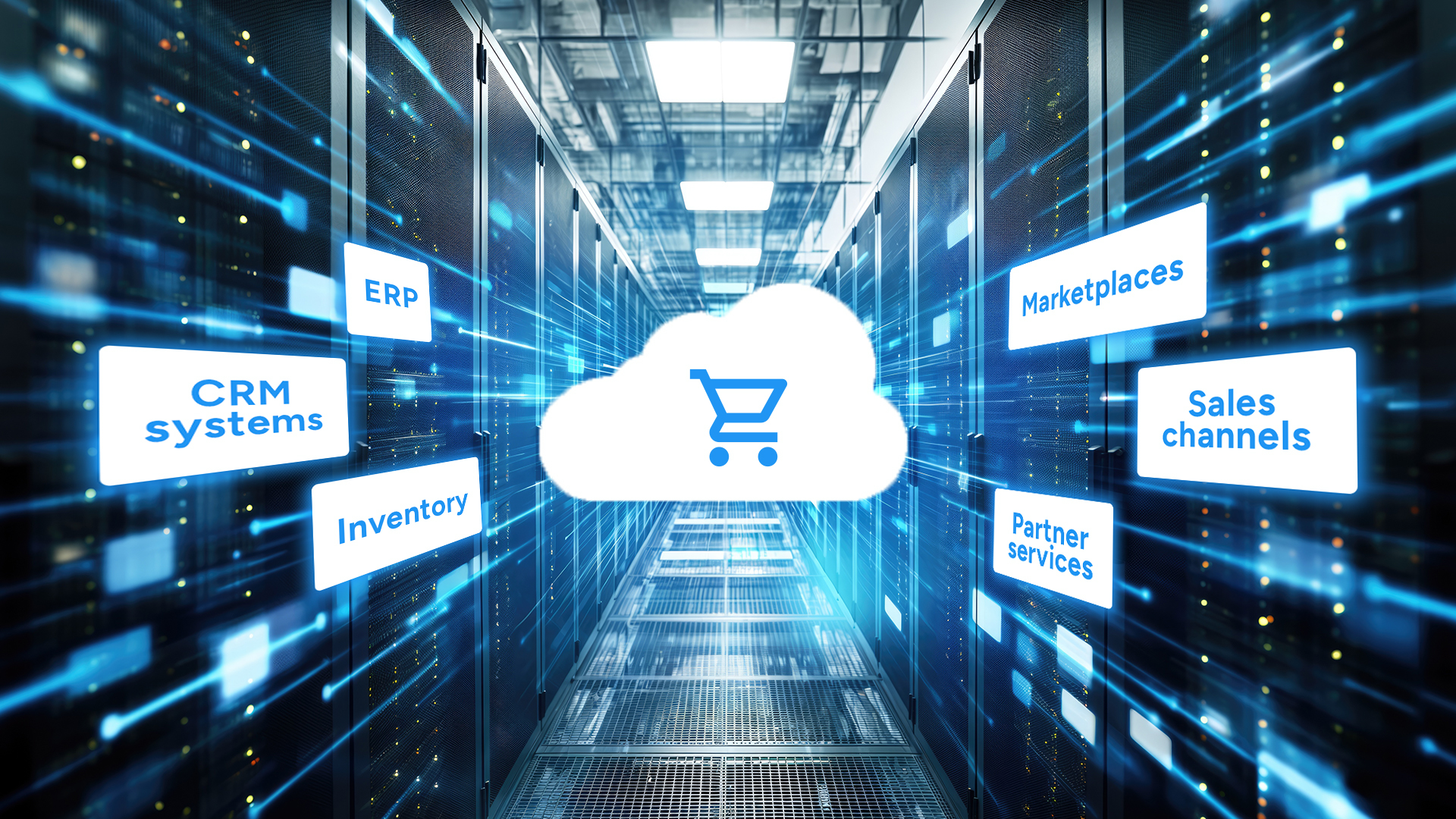The global ecommerce market is on fire, with online sales projected to hit a jaw-dropping $7.4 trillion by 2025. This eye-popping figure highlights the enormous potential for businesses to break into foreign markets and scale their ecommerce operations on a global stage.
But with great potential comes a fair share of challenges. Venturing into international waters isn’t just about translating your website; it’s about navigating a complex landscape of cultural differences, local regulations, and logistical hurdles.
In this article, we’ll dive into the perks of going global, tackle the obstacles you might face, and share expert tips on how to make your mark in foreign markets successfully.
What is global ecommerce?
With a plethora of ecommerce platforms, marketplaces, and digital solutions at your fingertips, there are virtually no barriers for merchants aiming to expand their online presence globally. It’s never been easier for businesses to go global and tap into a worldwide customer base.
Think of Amazon, one of the biggest ecommerce giants out there, enabling sales in over 100 countries with localized websites in 20 different nations. Or consider Alibaba, a global B2B powerhouse connecting millions of buyers around the world with suppliers, particularly those in China.
But you don’t have to be a major company like Amazon to make waves on the global stage. Even smaller businesses can dive into the international market and score overseas sales. The digital landscape is wide open, offering opportunities for businesses of all sizes to go global and reach customers far and wide.
Benefits of global expansion
There are many benefits of expanding globally. By tapping into these benefits, your business can thrive on the global stage and become a true international player.
Increased market opportunities
Expanding into foreign markets opens up a treasure trove of new customer bases and fresh revenue streams. Companies that crack the global market code tap into a much larger pool of potential customers, leading to a significant boost in sales and growth.
Diversification
Sticking to a single market can make your business vulnerable to economic downturns and sudden changes in consumer behavior. Going international spreads your risk across different regions, so even if one market hits a rough patch, others can keep your revenue flowing. It’s like having a safety net for your business.
Enhanced brand visibility
Entering a foreign market helps your business build a global presence and boosts brand recognition on an international scale. This increased visibility not only draws in new customers but also strengthens your overall brand image. As your brand becomes known across borders, it gains credibility and trust worldwide.
Competitive advantage
International expansion can set you apart as a forward-thinking, ambitious company. Customers view you as a global brand, which adds a lot of prestige. This competitive edge also allows you to negotiate better partnerships and deals on a global scale, giving you even more leverage in the market.
By tapping into these benefits, your business can thrive on the global stage and become a true international player.
See also: Cross-border ecommerce
Challenges in global ecommerce
Of course, diving into international waters isn't without its challenges. It takes thorough planning and research to navigate the bumps along the way. However, conquering these obstacles can set the stage for lasting success in foreign markets.
Here are some of the biggest hurdles ecommerce businesses face when expanding internationally:
Cultural and language differences
Each culture comes with its own set of preferences, customs, and buying behaviors. Understanding and adapting to these cultural nuances is vital for successful international growth. Language barriers are another biggie, so investing in high-quality translation services to localize your content is essential for engaging with foreign customers effectively.
Legal compliance
Every country has its own rules and regulations governing online retail, including data privacy, consumer protection, and taxation. Navigating these legal waters can be tricky, requiring thorough research and professional advice to stay on the right side of the law and avoid legal pitfalls.
Logistics management
Shipping, customs, warehousing, and other logistical challenges come with the territory of foreign expansion. Companies need to develop a robust supply chain management system that can handle international operations and ensure timely deliveries.
Expanding into multiple markets at once is no small feat. However, these hurdles can be cleared with a strong management team and the right business tools.
Strategies for successful global expansion
Conduct thorough market research
Diving into a foreign market without thorough research is like sailing into uncharted waters without a map. Ideally, you'd enlist some expert help, but whether you're flying solo or with a guide, comprehensive research is non-negotiable.
You'll need to dig deep into the market(s) you're targeting to get a solid grasp of the demographics, competition, and overall demand. Understanding the quirks of the foreign market—like consumer preferences, cultural nuances, and local buying habits—is crucial for a successful launch.
This research will also be your secret weapon in tailoring your products, services, and marketing strategies to align perfectly with the tastes and preferences of your new audience.

Localize marketing and support
Understanding local customs is key when marketing and providing support across different regions. Tailoring your marketing strategy and customer service to align with your target audience’s culture, language, and preferences can make all the difference.
- Leverage Local Influencers and Social Proof: Use local influencers, testimonials, reviews, and social proof to build trust and credibility with your new audience. People are more likely to trust and engage with familiar faces and voices.
- Mind the Language Nuances: Launching websites in your buyers' native language is a good start, as 76% of customers are more likely to buy if the information is in their native language. But don’t stop there. Pay attention to regional dialects, idioms, slang, and cultural references. Simple translation won’t cut it—you need to localize.
- Understand Pricing Norms: Pricing preferences can vary widely. For example, Western cultures often favor prices ending in odd numbers like 9 (think $9.99), while prices ending in 8 are more popular in Asia. Adapt your pricing strategy to match local norms.
- Offer Preferred Support Channels: Different regions have different preferences for communication. Some countries might favor live chat or phone calls, while others may prefer email. Offer support through the channels that your local customers prefer.
By focusing on these elements, you can create a more personalized and engaging experience for your international customers, helping to build loyalty and drive sales in new markets.
Set up efficient logistics and shipping
If you're selling physical products, timely delivery is a race against the clock. Over 90% of customers expect delivery within 2-3 days, and 32% will abandon their carts if shipping takes too long.
- Express Shipping: 1-3 days
- Air Freight: 5-10 days
- Sea Shipping: 20-45 days or more
Faster options are pricier, and while you might hit the sweet spot of 1-3 day delivery by shelling out more for shipping, high fees can scare customers away. Remember, 68.2% prefer free shipping.
Balancing quick and affordable delivery is tricky, and managing customer expectations is key. Overpromising and underdelivering can lead to disappointment—73% of customers would switch to a competitor after a single negative experience.
To tackle these logistical challenges, consider:- Dropshipping international warehouses, and third-party logistics: These can help speed up deliveries.
- Building shipping costs into product prices: This allows you to offer free shipping without losing your shirt.
- Setting a minimum order amount for free shipping: Interestingly, 58% of shoppers will add more items to their cart to meet this requirement.
Localize payments and exchange rates
Nothing annoys customers more than seeing the price skyrocket at checkout due to exchange fees.
- Allow customers to pay in their own currency: Use a payment provider with multi-currency acceptance to handle conversions seamlessly. Customers pay in their currency, and the funds are deposited into your account in the same currency, letting you decide when and how to convert them.
- Communicate potential fees upfront: Avoid surprising customers with hidden costs.
- Implement strategies to lower exchange rates: Consider hedging with financial instruments like forward contracts, futures contracts, or swaps to secure favorable rates or protect against unfavorable movements.
Harness the power of global ecommerce solutions
Navigating the realm of global ecommerce can be a daunting task, but there are plenty of solutions to make it easier. Platforms like BigCommerce, Shopify, and WooCommerce come equipped with powerful features to handle international sales, including multilingual websites and global payment options.
Marketplaces such as Amazon offer immense reach, helping businesses tap into vast, established customer bases around the globe. On the logistics front, partners like DHL and FedEx ensure smooth and efficient international shipping and handling, taking the hassle out of cross-border deliveries.
Global ecommerce solutions like ChannelEngine, offer a comprehensive platform designed to streamline global ecommerce operations, making it easier for businesses to adapt to local markets. With these tools at your disposal, expanding your ecommerce business worldwide is more achievable than ever.
How ChannelEngine facilitates global ecommerce

ChannelEngine is a dynamic platform that bridges the gap between brands, retailers, and marketplaces around the globe.
Whether you’re a brand aiming to broaden your reach or a retailer seeking smooth integration, ChannelEngine provides the tools to maximize sales, streamline operations, and boost revenue.
Key features include:- One Connection, 950+ Marketplaces: With ChannelEngine, a single connection opens the door to over 950 marketplaces and sales channels. No more juggling multiple integrations—ChannelEngine simplifies it all for you.
- Seamless Marketplace Integration: Unleash your potential for global growth with seamless marketplace integration. Manage orders, content, and inventory from one central hub. Connect effortlessly with your ERP and PIM systems for a comprehensive overview.
- Content Syndication: Spread high-quality content across all channels. Use existing product data from your PIM and ERP systems to ensure consistent, optimized listings. Customize content for various marketplaces or regions to enhance visibility.
- Automated Repricing: Let ChannelEngine handle automatic repricing to target peak-season sales and optimize margins on each channel. Stay competitive and boost your revenue effortlessly.
- Advanced Ecommerce Tactics: Enhance your offerings with virtual product bundles that increase order size and profitability. Use AI-powered bundles to deliver maximum value to your customers.
- Ecosystem of Partners: Tap into ChannelEngine’s extensive network of fulfillment providers, technology partners, and agencies. Collaborate seamlessly to elevate your ecommerce game.
With ChannelEngine, expanding your ecommerce presence has never been easier or more efficient. Take Schwartz & von Halen for instance, who succeeded on Zalando with Chapter E and ChannelEngine, selling out in 18 days, generating €120K, and are planning further expansion.
Final thoughts
As technology advances and our global village becomes more interconnected, going international isn't just an option—it's becoming a necessity. Fortunately, platforms like BigCommerce are stepping up to help merchants, big and small, expand across borders and scale their businesses exponentially.
Schedule a consultation today and let ChannelEngine help get you started on the path to global expansion.




